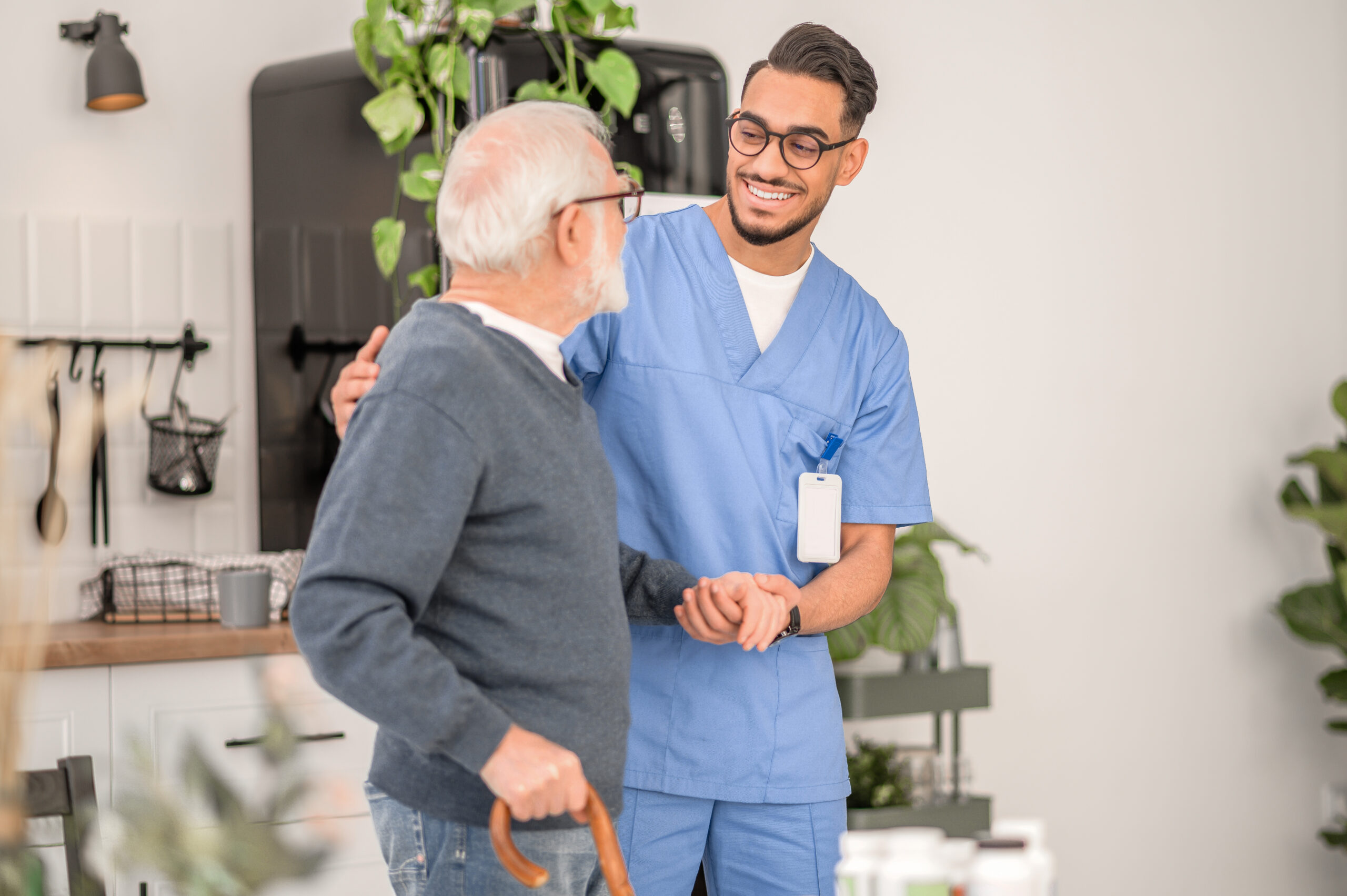
Simple steps to reduce their risk
Every year in the United States, 25% of adults 65 and older fall, according to the National Institute on Aging. At a minimum, a spill for an older individual could mean a trip to urgent care or the emergency room. In more serious cases it could mean surgery, a hospital stay, and in-patient rehabilitation.
If you look around almost any home, you’ll likely spot a handful of fall hazards. Perhaps an area rug, low lighting, or even a freshly mopped floor? We don’t think about it much when we’re younger. After all, it’s easier to regain our balance if we slip or trip. But since that becomes more difficult as we age, it’s important to assess your loved one’s home — and to take steps to prevent accidents.
In honor of Fall Prevention Awareness Week, our experts share risk factors to consider, along with simple strategies to lessen your loved one’s risk.
Understand age-related factors
Physical changes like these are a natural part of aging, but they can increase fall risk:
- Loss of mobility. As we age, we lose coordination, flexibility, and balance. Certain medical conditions may also play a role.
- Medications. Many older adults take medications for chronic illness, and some cause side effects that make them more unsteady on their feet.
- Muscle weakness. Starting at the age of 30, we lose 3-5% of our muscle mass each decade, according to the United States Office on Women’s Health.
- Vision impairments. Having vision issues as an older adult more than doubles fall risk, according to the Centers for Disease Control and Prevention.
Get a falls risk assessment
The first step is determining your family member’s risk for falling, and their primary care provider or home health professional can help. A risk assessment involves:
- Asking about previous falls or problems with balance, standing, or walking
- Looking at balance, strength, and gait (the way they walk)
- Reviewing any medical conditions that could contribute to falls, such as Parkinson’s disease or arthritis
If the screening shows your family member is at increased risk, a more comprehensive assessment may be recommended.
Take steps to prevent falls
Even if someone’s risk of falling is fairly low, it’s best to be proactive by taking some simple preventive measures, including:
- Getting annual hearing and vision checks. Be sure to update eyeglass prescriptions and invest in hearing aids if needed.
- Help your family member stay active and strong. In addition to walking, it’s critical to engage in activities that will help maintain balance, strength, and flexibility. Look into local classes at a community or fitness center suitable for older adults. Or ask your home health provider for exercises they can do at home.
- Improve home safety. From better lighting throughout the house to grab bars and non-slip mats in the bathrooms, there’s a lot you can do as a caregiver to help.
- Make sure they wear proper footwear. Shoes and slippers should fit well and have good tread.
- Review medications. If your loved one is experiencing side effects such as dizziness or drowsiness, ask their provider about alternatives. But don’t discontinue or change doses of any prescriptions without consulting the prescriber.
- Use assistive devices. Canes, walkers, and walking sticks can help keep your loved one on their feet.
By taking fall prevention seriously, you can empower your loved one to stay active, independent, and confident. Even small changes in daily routine and home environment can make a big difference.
Health care to keep your loved one at home
At Traditions Health, we prioritize every patient’s comfort, independence, and overall well-being. We understand the significant impact home health care can have on daily life, and work to deliver exceptional care tailored to each patient’s specific needs.
Need help caring for a loved one at home? Contact us today to learn about our home health services.